BattleTroops Reborn in A Time of War
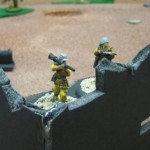 BattleTech is no longer a single game, but a universe with game rules that scale combat to almost any size conflict. The BattleForce rules allow massive regimental level battles. Standard Total Warfare rules cover games with forces between a lance and a company. BattleTroops, released in 1989, is BattleTech at the infantry skirmish scale where individual soldiers battle it out. It was followed by ClanTroops in 1991 which added advanced rules for Battle Armor.
BattleTech is no longer a single game, but a universe with game rules that scale combat to almost any size conflict. The BattleForce rules allow massive regimental level battles. Standard Total Warfare rules cover games with forces between a lance and a company. BattleTroops, released in 1989, is BattleTech at the infantry skirmish scale where individual soldiers battle it out. It was followed by ClanTroops in 1991 which added advanced rules for Battle Armor.
A Time of War is a combination and update of BattleTroops and ClanTroops. It is at it’s heart a RPG and not an infantry combat game. The rules for combat are extensive, but certain situations break under scrutiny. For a better infantry combat game we’ve made a few tweaks…
Warning, House Rules Ahead
This post is meant to provide additional options for players who want to dive into a BattleTroops type game with additions and tweaks that the ScrapYard believes make the game more balanced and fun. As always, agree with your buddy before your games what rules are being used.
One of the more annoying elements of A Time of War is the use of a static to-hit number. This may make a lot of sense, but for most of us already familiar with a variable to-hit number in Total Warfare, it can be frustrating.
Negative is good. Positive is bad.
That’s the way I like it (and the way the rest of the BattleTech universe works) so that is the way I play the game and will introduce it to others. From here on out, I will use the familiar Total Warfare style to-hit modifiers.
Reduced Lethality Through Armor Effectiveness
I have a bone to pick with the current personal armor system. There are a few things that just seem off. First, armor does very little to protect the individual. The damage reduction it provides under normal game situations is very minimal. Second, weapons with a higher Armor Piercing rating do not matter so long as the total of the AP and BD values add up the same. Lets see an example.
A Free Worlds League Soldier armed with a Magnum Auto-Pistol (3B/5) is face to face with a Lyran operative armed with a M&G Service Auto-Pistol loaded with armor piercing rounds (5B/3). Each wears personnel armor with a ballistic rating of 5 BAR. Both manage to get off a shot which hits the other.
The Free Worlds League soldier’s armor cannot resist the high AP of the armor piercing round from the Sterns and he will take the full 3 damage and the obligatory 1 fatigue.
The Lyran’s armor provides some protection against the Magnum. The difference between them (5BAR – 3AP = 2) is subtracted from the base damage. The Lyran also takes 3 damage and 1 fatigue.
What we end up with is a marginalization of many of the weapon systems in the game. There is far less variety within weapon classes beyond the sum of the AP and BD values. We need a change.
I’ve used the following system in my personal games and it works great. While slightly more complex (adding 1 more step), it creates a more varied experience. Different weapons will have different outcomes based on their AP/BD values even if they have the same sum.
RULES
After reducing BD as normal, convert remaining damage to fatigue damage for every point the BAR exceeds the AP of the weapon. This cannot reduce the remaining damage to less than 1 and does not replace the normal 1 fatigue suffered every time a character takes damage.
EXAMPLE
Lets take a look at how this house rule changes things.
The FWL soldier is still under armored against the armor piercing round from the Sterns and takes the full damage from the attack, 3 damage and 1 fatigue.
The Lyran’s superior armor reduces the incoming damage to 3 damage and 1 fatigue as normal. In addition we also convert the damage remaining to fatigue for every point the BAR exceeds the AP (this would be 2, same as the original damage reduction). The final damage suffered is only 1 damage but 3 fatigue.
All of a sudden we have a more diverse choice in weapons because the damage they inflict is more varied. Effective armor now further reduces the damage taken, however, you are also more likely to find yourself in situations where you are forced to duck for cover to recover fatigue or risk getting knocked out prematurely. More strategy and risk vs. reward to consider during the game.
Accuracy through volume. Effectively trading ammo for a better chance to hit rather then more damage, the way standard Bursts works. This is not meant to replace the rules as written but rather be an additional option.
RULES
Declare you are Burst Firing for accuracy at a target (a Simple Action). For every 3 rounds fired you gain a +1 bonus to your to-hit (round down, maximum +3). Damage is applied as though a single shot was fired (do not use the burst fire damage value).
EXAMPLE
You are firing a TK Assault Rifle at a target behind half cover from medium range and declare you are Burst Firing for Accuracy with 6 bullets. You need a 6 (assume Target Number of 3, Range:+2, Cover:+2, Recoil: +1, Accuracy: -2).
Now you’re firing the TK Assault Rifle at a target at long range behind heavy cover so you declare you are Burst Firing for Accuracy with 9 bullets. You need an 8 (assume Target Number of 3, Range:+4, Cover:+3, Recoil: +1, Accuracy: -3).
Grenades and satchel charges are overpowered. Almost all of my games from the Beta were settled with a single grenade throw. The fact that they explode immediately after being thrown has an unbalancing effect on the game especially when high initiative characters are the ones doing the delivery.
ENFORCING THE RULES AS WRITTEN
One mistake I made early on is to allow the use of grenades without preparation. Make sure you follow the guidelines presented in the Action Complexity Table (page 167). It costs a simple action to ready or stow a weapon. You have to ready a grenade before you can throw it and more importantly you have to stow any weapons you are using before you can even ready that grenade.
Of course it’s an option to simply drop your primary weapon (incidental action) to be able to ready and throw in one turn, but then you have to spend a simple action later to pick up your weapon or ready a secondary weapon.
NEW RULES
Grenades do not explode immediately. A thrown grenade will explode after X completed activations, where X is half the number of active characters in the game when the grenade was thrown (rounded up).
A character may “cook off” a grenade with a simple action. This will prime the grenade causing it to explode immediately after being thrown or after the character throwing the grenade completes his next simple or complex action, whichever comes first.
The suppression fire rules were tweaked from the Beta release and are much better for it. Though it still needs adjustment. The mechanic should be about area denial and a true threat to your opponents. As it stands, suppression fire is very weak, and ends up underutilized.
RULES
Suppression fire lasts until the shooter activates again (or cannot fire). Any unit attempting a skill check while in or after passing through Suppressing Fire must add a +2 modifier to the attempt.
Overwatch (Held Actions)
Winning initiative is a very big deal in A Time of War. In middle to end game situations you need it to clear stuns, run for cover or finish off a wounded opponent. However, before forces have mixed it up in earnest, there is an overwhelming temptation to hold action with every soldier you can in order to act last.
To avoid turtle tactics, we can inject a little variability into this game mechanic.
RULES
After electing to interrupt another character’s action, an opposed reflex attribute check is used to determine which character gets to act first. The losing character must act immediately after the winner.
The leadership rules in A Time of War are necessarily abbreviated due to the RPG nature of the system. Any meaningful effect of leadership skills can and should be role played by the players and the GM. For an infantry skirmish game, we can live with a little extra complexity to give players a reason to use this skill in their games.
RULES
If not using team or squad initiative, a character with the Leadership ability may use a simple action to “Lead” a friendly character. The following turn, the affected character may add half the Leader’s Leadership skill to their initiative roll (round up).
Stealth
The stealth mechanic needs a retooling in order to bring skill rolls into line with what is reasonable. In any infantry game, the ability to remain unseen is a huge advantage. However, once the lead starts flying the ability to remain unseen should quickly diminish. The Stealth ability and it’s associated modifiers need to be carefully selected to keep game play balanced.
RULES
A hidden character may not be targeted directly by opposing units. A perception check must be made against the target’s stealth skill to spot the target. Once spotted, the target is revealed to every other unit. A character with the Stealth skill may re-hide with a Stealth skill check as a complex action if no opposing units have line of sight. A character with Stealth may begin the game hidden if no opposing units can draw a clean line of sight.
| Stealth Movement Modifiers | |
| Stationary | 0 |
| Crawling | -1 |
| Walking | -2 |
| Running | -4 |
| Sprinting | -6 |
The following table replaces the Vision Based Action Checks section of the Action Check Modifiers Table (page 41). It adds two condition modifiers when trying to spot a stealth’d character who fired a gun in his/her last activation.
| Perception Check Modifiers | |
| Point Blank, 5 meters | -2 |
| Short, 20 meters | 0 |
| Medium, 40 meters | +1 |
| Long, 60 meters | +2 |
| Extreme, 80 meters + | +3 |
| Muzzle Flash (vision) | -4 |
| Weapons Discharge (hearing) | -4 |
I’m not very confident regarding the stealth rules and I’m sure they will need some additional play-testing and tweaking to get the balance just right.
Consciousness Checks
A curious change made late in the development cycle (post Beta) was a revised KO Check. 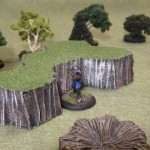 The change had the effect of making each and every character in the game (with few exceptions) exactly the same and imposing a very harsh first hit KO check roll of 7+. The change saps variety from the selection of characters. Here are the values I use in my games which has worked well. Knock outs are still a threat but only after you are either very unlucky or very beat up.
The change had the effect of making each and every character in the game (with few exceptions) exactly the same and imposing a very harsh first hit KO check roll of 7+. The change saps variety from the selection of characters. Here are the values I use in my games which has worked well. Knock outs are still a threat but only after you are either very unlucky or very beat up.
RULES
A consciousness check target number is 12 – Body – Willpower + Injury Modifier + Fatigue Modifier.
Give the Game a Try
A Time of War is a great system with seemingly endless customization options. The gritty feel of the universe compliments the overall game. Give the game a try and see how it all works. You can easily pull together some of the Sample Characters from A Time of War for a demo.
Posted under Articles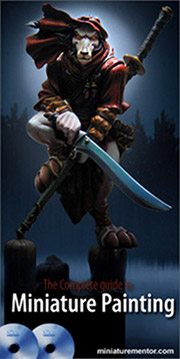




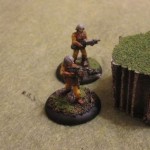
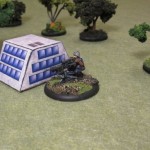
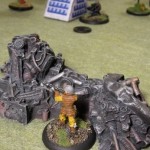
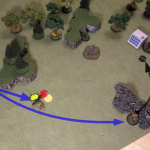
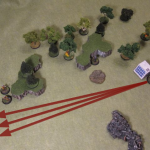
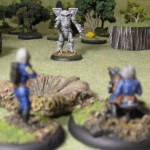
I generally don’t like house rules, but my experience with the system has generally confirmed everything you said. I especially dislike how bad suppression fire is because it was significantly better in the MW3RPG rules.
The only other significant change we’ve made is adding a player background, and awarding up to 1k bonus XP to starting characters for a good/interesting/intriguing background. That XP must of course be spent on background related items, and any additional negative traits must be included in the background. Saves the GM a lot of work.
I also agree very strongly with what you said about KO checks. I believe the KO checks are what makes the Initiative so terribly important – if one side goes first, they can KO half the opposition before they get a chance to act. Realistic, sure – but very frustrating.
I like this a lot. I have heard from various sources that the ATOW rules were a bit wonky in places, but this is the first time I have seen them (a) listed and (b) well-considered solutions offered up.
Thank you.
Brilliant post, serendipitously posted in time for the start of my campaign, which will use ATOW for the small unit actions. Great point about more fire giving more chance of hitting rather than damage as an option too.
Question is do I need to use Battletroops too, or is this an all in one update package?
@Task Chair Pundit – I like the character background, but since we usually do scenarios rather then a campaign, the players don’t customize the characters. The background for us is usually to give the scenario more flavor or expand on objectives. Were you referring to the beginning of a campaign or do you let the players customize their characters for scenarios?
@Paint-It-Pink – AToW is all inclusive. It replaces both BattleTroops and ClanTroops.
Burst fire needed some tweaking for common sense. The RAW were “Herb-fisted”, and sucked. Burst fire *should* add accuracy, but only in certain situations.
Think of it this way. The impossible shot. Target is a mile out. Sniper sets up her weapon, gyroscope on the barrel, tripod helping brace the longarm. She aims for a few seconds, holds her breath, and squeezes the trigger, letting out a single slug of depleted uranium.
Is she really going to have a better shot if she flips it on auto and lets out 12 rounds?
Spray and pray is more effective short range, and a hindrance long range.
Secondly, I think grenades should explode if they hit hard armor, like a Mech, Elemental, the like, if it’s an Anti Armor nade, of course. Also, I dont think the simple action to ready a nade should be required, but the trooper should off-hand penalties if they shoot and throw in the same round.
I agree that the reversal of the number system, while algebraically equivalent, was a bad move. Why reverse things from the way btech players expect to see it?
I am going to think on the rest of these ideas, particularly for my MW2M system. My personal opinion is that the number of house rules needed to fix ATOW would make it unrecognizable.
On burst fire, I have never fired a gun in my life, but my understanding based on listening to enough gun nut rants ( and some familiarity with FPS games) is that the primary purpose of burst fire is to increase stopping power, not accuracy. Burst fire is horribly inaccurate. This is why the us military limits their grunts to three-round bursts.
Taharqa, your military buddies are correct on stopping power for the burst fire, it has nothing to do with accuracy.
As for the this post on ScrapYards modded rules for ATOW, it’s like ATOW started making up a system for actual table top combat like BTech, and then just stopped and got lazy somewhere along the way. You posted a lot of good fixes though.
Also, Taharqa said about the more we add house rules to find that table top feel, the more and more it’s not really ATOW anymore, said to say the least. They could try to make a whole new game again for table top infantry battles. But a lot of people will want to use their ATOW characters for that (which is what I would want to do, themed armies with stories are so much cooler than something thrown together to just “win” a game), then you have to come up with the process of converting your character to whatever rules they come up with and so on.
Can’t they just get it right the first time!? :(
I try not to be too hard on Catalyst. They set out to make a RPG and not an infantry skirmish game.
That said, I think there is incredible promise in the system. Yes I use house rules, but the core of the system is exactly as designed by Herb and company.
Saxywolf and I are planning on many future posts covering A Time of War as the new BattleTroops game. This is only the beginning!
Our group has talked about doing the same thing you guys are doing. So we will more than likely adopt all of your house rules since you have already gone through the troubleshooting.
The RPG system for AToW does mostly work for a war gaming style game, just needs tweaks. I do like the RPG feel though inside the game, it certainly likes the input of imagination, and you can also easily inject humor, which always make for fun games. :)
@ Noobk,
I’d love to hear how your games go. Seeing things from another perspective would be useful so please drop me a line with your results!
The RPG aspects of A Time of War do allow for some unique elements in missions and scenarios. One of the big missions in the original BattleTroops game was a group of Dragoons fighting off a bunch of Combine forces from inside a building. The goal was to send a message over the HPG network.
Using some of the technical skills, while they have no combat effect, would be a clever way to renew this scenario.
Regarding the Consciousness Checks… The new errata would have you fall unconscious 42% of the time after being slapped in the face with no previous damage. It makes me think it was supposed to be “a fixed BOD attribute check with a TN of 7.”
Wow, am I super late to the party or what?